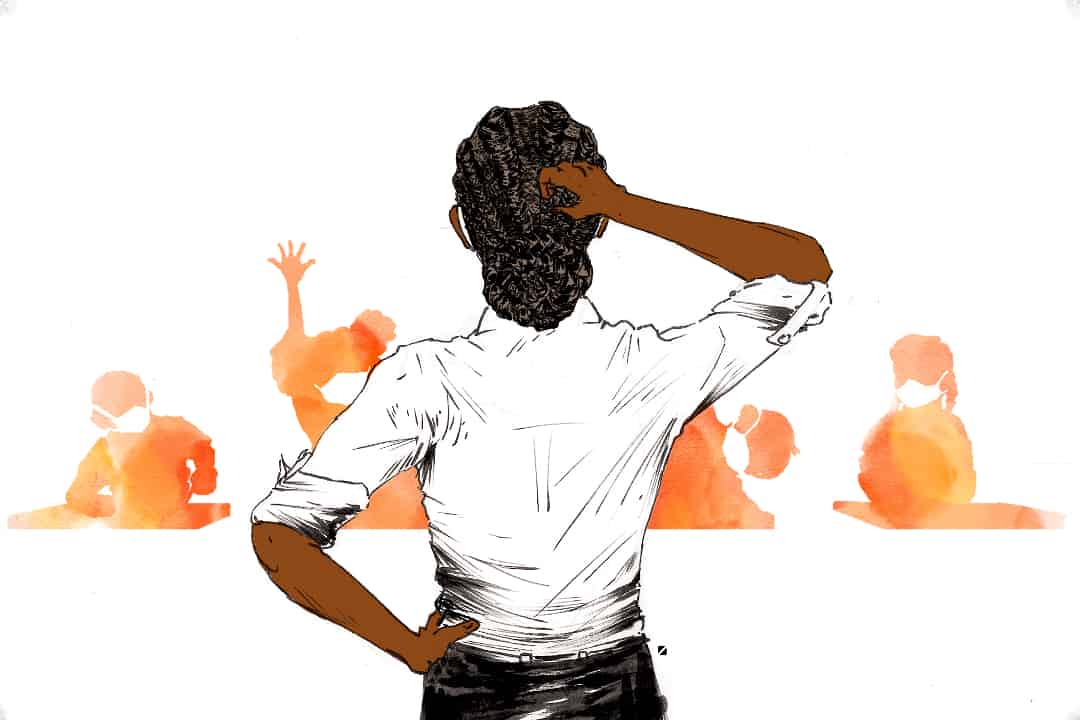Over 500 students in teaching programs at the Ontario Institute for Studies in Education (OISE) returned to in-person or virtual classroom placements this year. Normally, over 1,000 OISE students participate in a practicum or internship for program credit or certification, with most of these placements occuring in schools.
Despite the pandemic, OISE is continuing to offer students in-person teaching placements, in addition to virtual options.
“There are currently 342 students completing a placement wholly or partly in-person, and 212 students completing an online placement,” Normand Labrie, OISE Associate Dean Programs wrote in an email to The Varsity. He added that, due to the pandemic, “[OISE’s] programs are carefully considering how to meet professional requirements while also supporting school partners during this time.”
So far, there have been 3,282 school-related cases of COVID-19 reported in Ontario, and some have criticized the class sizes in Ontario’s approach to reopening public schools for being too large.
The Varsity spoke with two Master of Arts in Child Study & Education (MA-CSE) candidates doing in-person elementary school placements about what it is like to be teaching in a classroom during the pandemic.
In-person versus online placements
Having an in-person placement was important to some OISE students, such as Christine Tropak, who is in her first year of the MA-CSE program and has been placed in a third grade classroom. “There is something to be said of being physically there,” Tropak said. “That was definitely something really important to me.”
For others, like Abigail Godfrey, who teaches second and third grade students, a virtual placement would have been preferable. “I was pushing for a virtual placement,” she said. “I have a high risk person in my household… [and] I have my own health issues.” While Godfrey’s placement is in person, she is grateful that the class only has 16 students and is within walking distance.
“I know that [OISE] listened and responded, and in the end, it worked out,” Godfrey said.
She added that while the placements are meant to be hands off, that doesn’t always happen. “It’s honestly so hard… to teach in a completely hands-off way,” Godfrey said. She added that physical distancing at the placement is challenging because it’s hard to hear students through their masks, so teachers often need to get close to students and bend down to hear them.
“I’m much, much closer to them than I could ever have believed,” Godfrey said.
Both students reported feeling some stress about COVID-19 while at their placements. “Obviously there’s some concern… It’s definitely something that’s always in the back of your mind,” Tropak said. “But I think that we’re doing the best that we can be doing.”
“I feel like [the stress] is ever present,” Godfrey said. “I’m just used to this low level, constant [COVID-19] narrative.”
Godfrey added that, so far, there have been no confirmed COVID-19 cases at the school where she has been placed. However, two of her classmates are placed at schools that have had confirmed cases.
Teaching during a pandemic
Tropak reported that safety is a top priority for schools. “The school provides me with medical grade masks, and the kids all wear their masks from home. They have to leave their masks on pretty much at all times,” she said. “There’s hand sanitizer at every door and reminders everywhere to sanitize and social distance.”
Godfrey and Tropak both reported that classrooms windows remain open at all times to increase ventilation. “I’m not sure how it’ll be in the dead of winter, but for right now… I don’t notice it,” said Tropak. Godfrey added,“It’s going to be really hard if it’s -20 outside, and the windows are open, and there’s snow blowing in.”
Tropak said that teaching students while wearing masks is certainly more challenging. “I do try to be more expressive than normal… when I’m speaking to [my students] to make up for what I’m lacking with a mask.” She added that teaching young students how to pronounce words and sounds is much more difficult when wearing a mask. “You don’t realize how much you’re looking at someone’s mouth when they talk.”
Both Godfrey and Tropak noted that everyone has been handling the situation as best they can, from students to schools to OISE faculty. “I… am very appreciative of the administrative and practicum team at OISE for being so conscientious and caring in placing us,” said Godfrey.
“The schools have done a really good job of rolling with the punches and being as safe as they can,” said Tropak. “Honestly, the real MVPs here are the kids. They’ve done such an amazing job. I’m very proud of them.”


